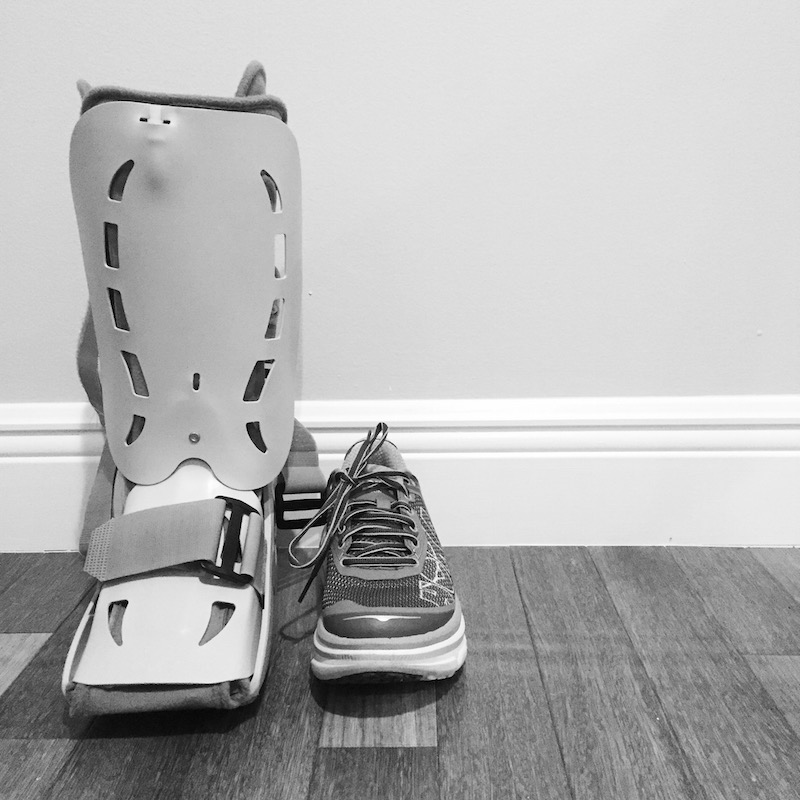Reading as an Alternative to Injury
Chrysta Brown
 During my junior year at a performing arts high school, there was an epidemic of foot and ankle injuries. This is one of the clearest pictures I have of that year: A group of girls sitting against the dance studio mirror with one leg crossed in front of them, and the other elevated on piles of ice packs. It could be the middle of that memory, but at that time there are at least four of them sitting there with their expressions straddling the line between looking sad and trying to look sad.I remember my instructors’ expression more clearly. They were annoyed. They would address us, the uninjured, and say things like “That’s why you all get injured. You’re not warming up properly,” or “Maybe if you would hold your arms properly your ankles wouldn’t hurt.” We would sigh and take it, adjust our arms, and save our sighs and grumblings for the dressing rooms after class.
During my junior year at a performing arts high school, there was an epidemic of foot and ankle injuries. This is one of the clearest pictures I have of that year: A group of girls sitting against the dance studio mirror with one leg crossed in front of them, and the other elevated on piles of ice packs. It could be the middle of that memory, but at that time there are at least four of them sitting there with their expressions straddling the line between looking sad and trying to look sad.I remember my instructors’ expression more clearly. They were annoyed. They would address us, the uninjured, and say things like “That’s why you all get injured. You’re not warming up properly,” or “Maybe if you would hold your arms properly your ankles wouldn’t hurt.” We would sigh and take it, adjust our arms, and save our sighs and grumblings for the dressing rooms after class.
These hostile attitudes changed a week or so later when one by one the injured girls limped into the studio wearing a sneaker on one foot and a large black and medieval looking boot on the injured leg. “Tendonitis,” they informed anyone who asked and sometimes people who didn’t. They would be unable to dance, climb stairs, carry their books and book bags, go through metal detectors in the morning, or show up to class on time for anywhere from six to twelve weeks. The girls once chastised and accused of simply trying to get out of a dance class where now praised for watching in padded chairs in the back of the studio. Occasionally, the injured few would perform the arm and head positions of the dance we were working on and the teachers would turn their backs to the ones who were dancing with their whole bodies to correct the partial movements of the brave and broken ballerinas. It was impossible not to notice the difference in treatment. I saw the praise, attention, and compassion that came with being hurt. I wanted that. I wanted an injury too.
Two weeks later, I would sneeze in the middle of a math class. When I went to bring my head up from the display, I found that I couldn’t.
“What is wrong with you?” my friend asked, cackling at my crooked neck.
I brought my hand to my cheek and tried to pretend that I was merely leaning on the elbow on the desk thoroughly bored with trinomials. Unfortunately, there were a good six inches between my elbow and the desk. “I think my neck is broken,” I told her. I went to the nurse, who wouldn’t give me Advil or call my parents. Instead, she attempted to cure me with her favorite antidote: a bag of ice cubes that would within ten minutes and send streams of icy water down my shirt.
The diagnosis was whiplash. Whiplash. From a sneeze. Not only is it a ridiculous way to injure yourself, but after that doctor’s visit and a conveniently tied scarf, no one would look at me and know that something was wrong.
The chiropractor nudged my neck back to its rightful place. She cleared me to dance before I could even practice my expression of grief with just the slightest hint of heroic acceptance. She sent me home with a special pillow, a set of exercises, and an ice pack stamped with the name and contact information of the office. “You’re a dancer,” she reminded me. “I know you don’t want to take time off.” I stifled a scowl. She knew nothing.
I think the thing that all bodies have in common is the ability to break and rebel, but not all injuries are external. They don’t all get casts, braces, or doctors notes. Sometimes they are covered with ace bandages, baggy clothing, smiles, or a cheerful “I’m good. How are you?”
In Kurt Vonnegut’s Timequake, he talks about his motivation for writing. “Many people need desperately to receive this message: 'I feel and think as much as you do, care about many of the things you care about, although most people don’t care about them. You are not alone.’”
Obviously, Vonnegut and I are talking about two different things. He’s talking about writing, and I’m talking about sacrificing the use of my limbs for a little kindness from my classmates and professors, but even so, I wish I’d read that book during that time period of my life. With the injuries that come with dancing and living, those seen and unseen, that information might have been nice to know.
